We frequently receive questions regarding the use of GPS-estimated height to determine an antenna’s height above ground as a required part of antenna alignment. It is Sunsight’s position that GPS height should not be used in determining proper antenna height due to poor tolerance in GPS height measurements. The AAT’s LASER Rangefinder system is far more accurate than GPS height measurements and is capable of meeting carrier height specifications and tolerances, where GPS estimated heights cannot.
There are two typical measurements discussed concerning height, Mean above Sea Level (MSL) and Above Ground Level (AGL). When measuring antenna height on a tower, AGL is the more widely required and accepted measurement.
1) The first and less accurate method is what we refer to as the MSL difference method. In this method, the alignment tool user takes a GPS-estimated MSL reading on the ground, records it, and then takes a second GPS–estimated MSL reading on the tower. The ground MSL height estimate Is then subtracted from the tower MSL height estimate to determine an AGL value.
The limitation of this method lies in the accuracy of GPS-based MSL heights. As a general rule, MSL height accuracy is about half of the GPS system’s horizontal accuracy. As an example, using a competitor’s alignment tool with +/- 1 meter (3.28 ft.) of horizontal accuracy, each MSL measurement could be off by 2x compared to the horizontal accuracy. This results in an MSL accuracy of +/- 2 meters (+/- 6.56 ft.). When using the MSL difference method, TWO tolerance errors are introduced to the height measurement – the initial height measurement taken on the ground (with a +/- 2-meter tolerance), and a second height measurement taken on the tower, with another +/- 2-meter tolerance. The potential error in the final AGL measurement is as high as +/- 4 meters (+/- 13.12 ft.). Further, this method utilizes Root Mean Square (RMS) probability values for MSL height, which means the tolerance value of +/- 2 meters is correct about 68% of the time. The rest of the time, the MSL height value probability indicates each measurement falls outside of the +/- 2 meter (6.56 ft.) range, rendering the measurement potentially more unreliable. To obtain a 99% (3 sigma) tolerance value for MSL, the tolerance would be approximately +/- 6 meters (19.69 ft.) for each measurement.
2) The second and far more accurate method for determining antenna height is by using a LASER rangefinder to measure the AGL height of the antenna directly. The LASER Rangefinder used with the Sunsight AAT has an accuracy of +/- 0.3 meters (+/- 0.98 ft.) at a range of up to 1,000 meters (3,281 ft.). If even higher measurement accuracy is required, an upgraded LASER rangefinder is available with an accuracy of +/- .04 meters (+/- 1.5 in.).
In Sunsight’s experience, the AGL height accuracy for antenna alignment, as required by cellular carriers, is +/- 1 foot. Only the LASER Rangefinder method of measurement fulfills this requirement.
Sunsight’s LASER Rangefinder Kit works with all Sunsight tools and is in stock with a standard parts order lead time of 1-2 business days. For a quote, please email sales@sunsight.com
